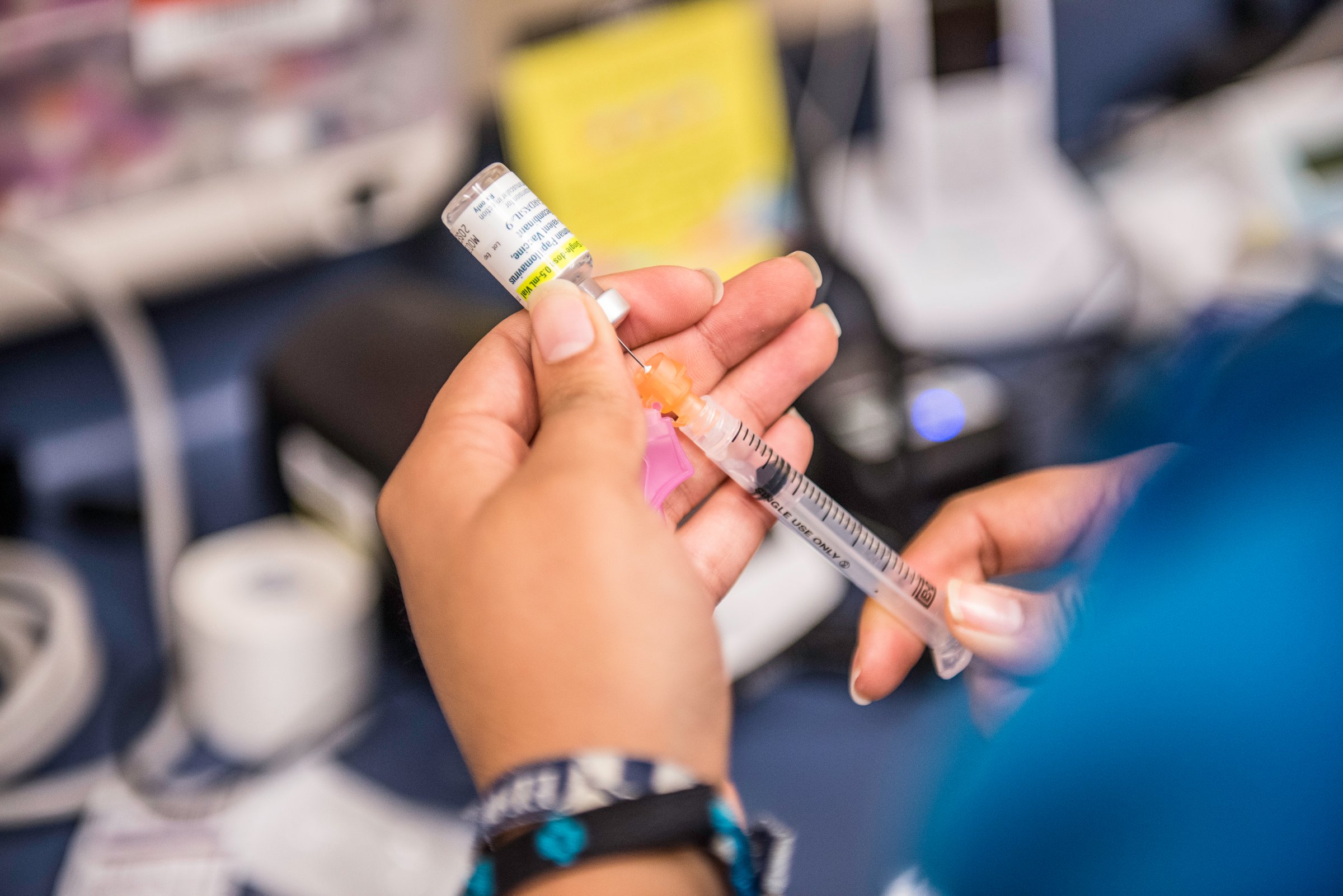
More teenagers than ever before are getting vaccinated against human papillomavirus (HPV), according to new data from the Centers for Disease Control and Prevention (CDC).
Federal guidelines now say that all children should start two-dose HPV vaccination at age 11 or 12 to protect against HPV-associated cervical, vaginal, penile, anal and throat cancers. Despite that recommendation, however, HPV vaccination rates have traditionally lagged far below their targets. That’s still true — but the new report does suggest that rates are rising.
Between 2016 and 2017, the CDC says, the percentage of teenagers who reported getting at least one dose of the HPV vaccine increased from 60.4% to 65.5%. Meanwhile, the percentage of teens who reported being up to date with the entire vaccine series rose from 43.4% to 48.6%, according to responses to the 2017 National Immunization Survey—Teen, which includes data from almost 21,000 U.S. teenagers ages 13 to 17.
While HPV coverage has a ways to go before it matches vaccination rates for diseases including meningitis and tetanus, the report notes that HPV vaccination is becoming more standard with time. For example, among adolescents surveyed from 2016 to 2017, 56.3% of those born in 2004 reported starting the HPV vaccine by age 13, compared to only 19.6% of those born in 1998. Similarly, 29.8% of those born in 2004 reported finishing the vaccine course by age 13, compared to only 7.7% of those born in 1998.
While there’s still work to be done, particularly among boys, the report says that these increases suggest that efforts to improve education around the HPV vaccine and cancer prevention are working. And the effects of those upticks may already be beginning to emerge.
Separate new data from the CDC shows that rates of cervical cancer — which is overwhelmingly caused by HPV — dropped by 1.6% each year between 1999 and 2015. (HPV-associated oral, anal and vulvar cancers, however, increased during this time period, pointing to both changing sexual behaviors and the need for better screening standards.) While the drop in cervical cancer cases is likely due in large part to better screening practices, the authors note that “studies have reported reductions in cervical HPV infection, genital warts, and cervical precancers” associated with HPV vaccination.
More Must-Reads from TIME
- Donald Trump Is TIME's 2024 Person of the Year
- Why We Chose Trump as Person of the Year
- Is Intermittent Fasting Good or Bad for You?
- The 100 Must-Read Books of 2024
- The 20 Best Christmas TV Episodes
- Column: If Optimism Feels Ridiculous Now, Try Hope
- The Future of Climate Action Is Trade Policy
- Merle Bombardieri Is Helping People Make the Baby Decision
Write to Jamie Ducharme at jamie.ducharme@time.com